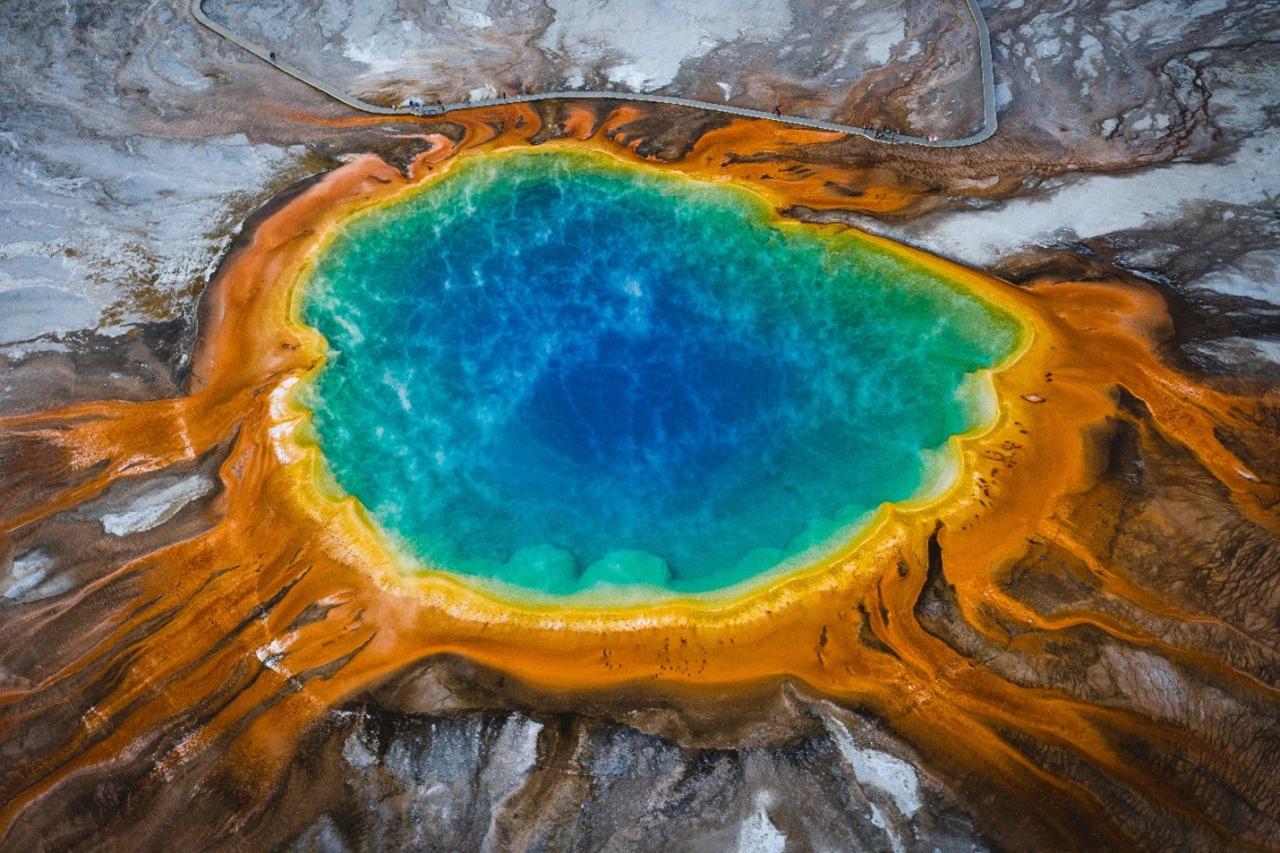Yellowstone National Park is a national treasure that is a literal hot spot designated that is different from other thermal areas made of limestone. The unique formations would develop due to the soft limestone rock texture that is compared to an inverted cave.
The Mammoth Hot Springs is one of the main attractions at Yellowstone for its unique appearance and formation that is hundreds of thousands of years in the making. Each year at Yellowstone, the melted snow and rain seep into the earth that is first cold then warmed by heat radiating from a molten magma chamber deep underground. The magma chamber is the remnant of a cataclysmic volcanic explosion that occurred 600,000 years ago.
The hot springs are the most common hydrothermal feature in Yellowstone but the ones in Mammoth Hot Springs are vastly different. At the Mammoth Hot Spring, water flows down a large terrace hillside looking like a gentle cascade through the limestone, creating a unique formation.
The limestone was from an ancient inland sea that once covered the National Park as gases and hot water travel through the cracks on their way to the surface, dissolved limestone is carried out deposited as white travertine or calcium carbonate (found in antacid medication). The water and minerals sculpt intricate designs and patterns resembling a staircase as the algae color the springs in yellow, orange, and brown.
The unique underground water system isn’t controlled and can change certain features of the park. As the water flow changes, certain hot springs can flow one day then dry up the next as the water flow is now feeding another hot spring.
The history of Yellowstone demonstrates that dormant springs have the ability to revive over time. Some of the more popular springs like the Lower Geyser Basin, Grand Prismatic Spring, and New Blue Spring are visited frequently for their unique beauty. The unpredictable water flow system gives visitors the opportunity to see the park multiple times as it offers a different experience each time.



